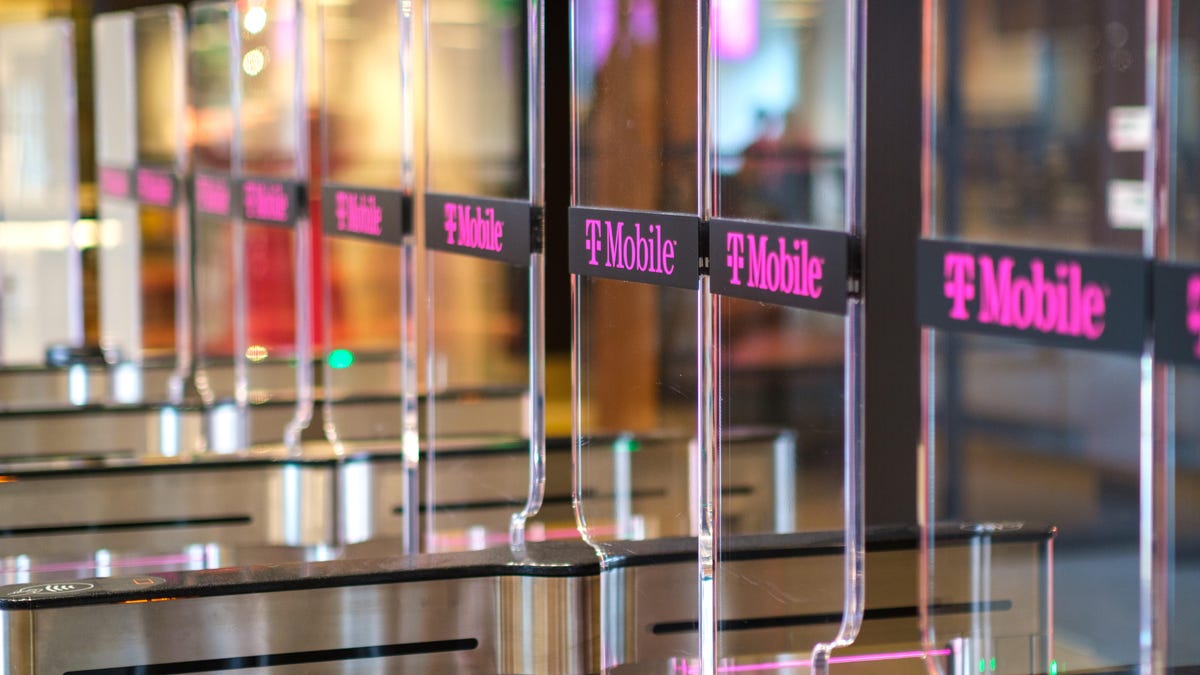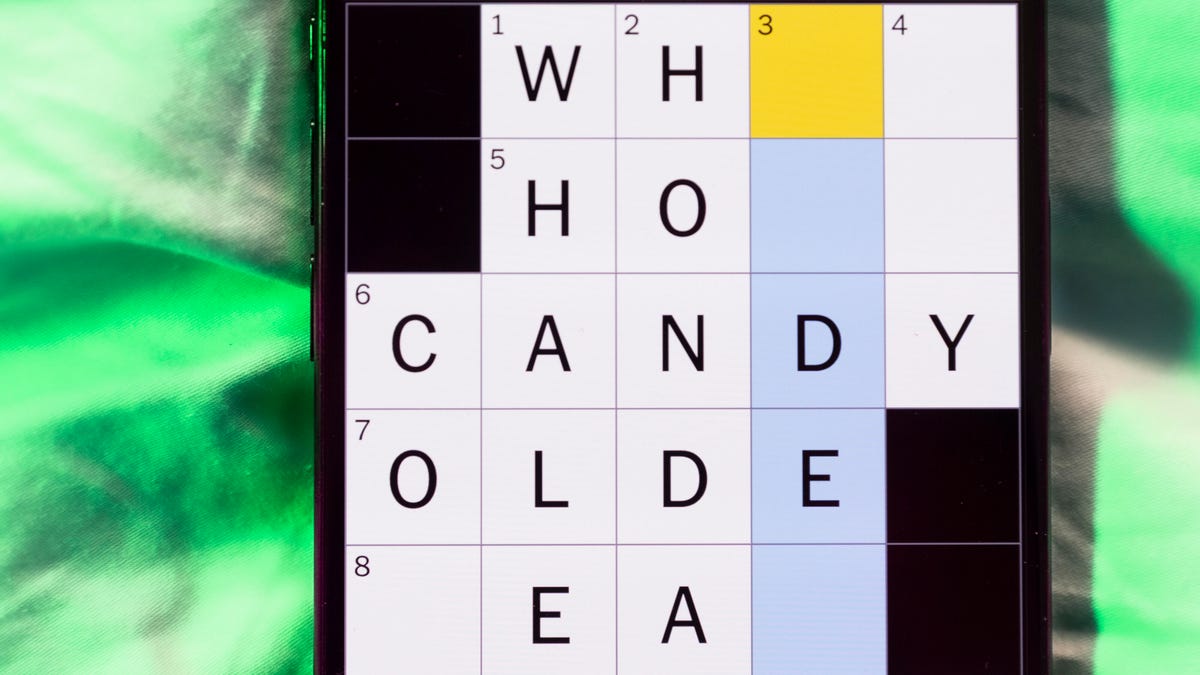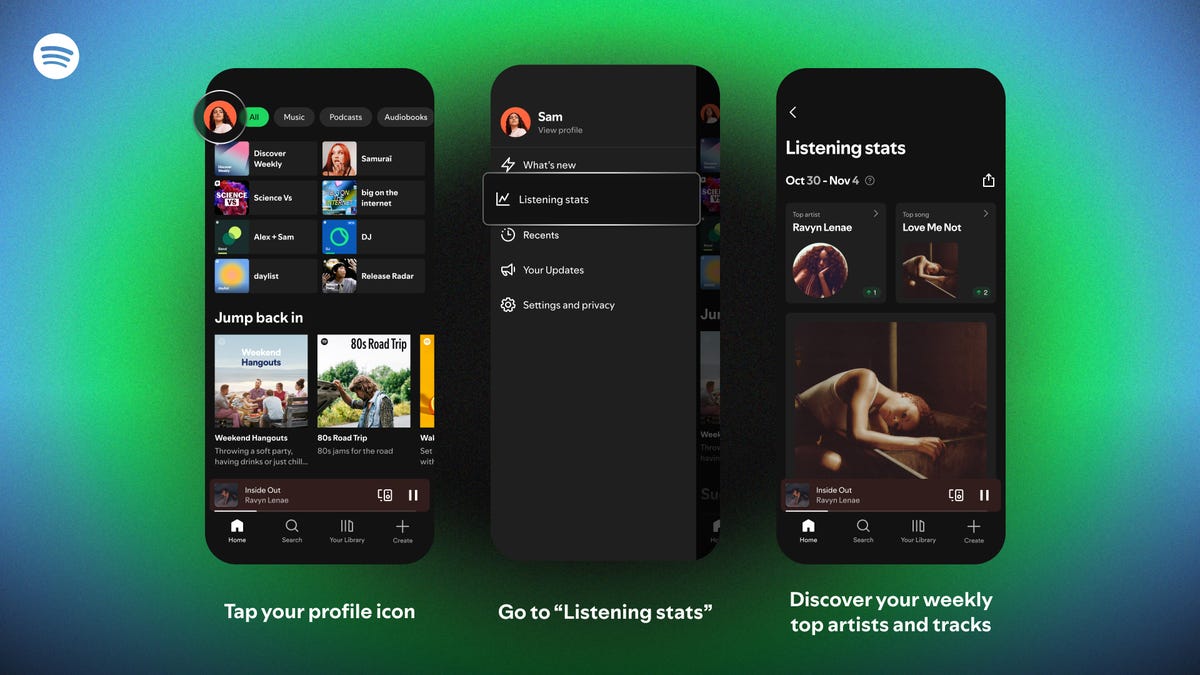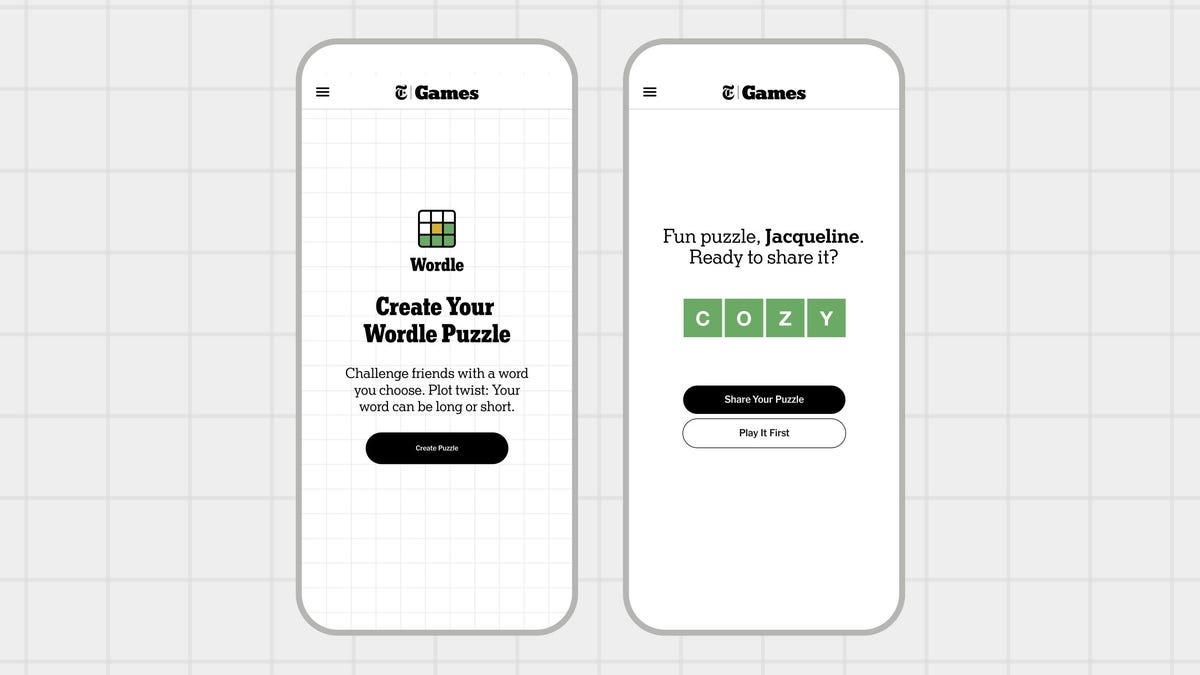Technologies
Exclusive: T-Mobile Named Best Mobile Network in US, Adds T-Satellite Features and DoorDash Perks
CNET sat down with T-Mobile executives to break down how the no. 4 carrier vaulted to the top.

During a live event today at its Tech Experience 5G Hub in Bellevue, Washington, T-Mobile announced that it has been named the Best Mobile Network in the US by Ookla, based on half a billion real-world usage tests conducted over a six-month period. This marks the first time T-Mobile has taken the overall top spot.
(Disclosure: Ookla is owned by the same parent company as CNET, Ziff Davis.)
«We made big bets on 5G, pushing the limits to deliver speed and coverage no one thought possible,» said T-Mobile CEO Mike Sievert. «Now, as the Best Mobile Network in America, with unmatched satellite-to-mobile capability, it’s clear we’re shaping the future of wireless with a network built not just for speed, but for possibility.»
The company also announced additional features as well as a July 23 commercial launch date for T-Satellite, its Starlink-based satellite connectivity service. Because T-Mobile has associated its wireless brand with an ongoing array of perks, the company is also adding free DoorDash DashPass memberships for T-Mobile subscribers with Magenta status.
In less than a decade, T-Mobile has gone from a limited-spectrum upstart with a penchant for bright pink branding to the top of the competitive US mobile industry, largely due to the way it has navigated the transition to 5G networking (and maybe some help from the magenta colors). Merging T-Mobile’s low-band spectrum with Sprint’s mid-band became one of the main reasons T-Mobile is now crowing about its spot in Ookla’s rankings.
As part of these announcements, T-Mobile invited CNET to an exclusive behind-the-scenes conversation about how it arrived at this point and a tour of some of the technologies at work at its headquarters and labs.
An unconventional road to 5G
Every company says it’s the best at something, and for a long time, T-Mobile claimed it was the best value among the major wireless carriers. «US consumers have always had to make a choice between going to a much higher priced but higher quality network, or make a trade-off in network and get a better value,» said Mike Katz, T-Mobile president of marketing, strategy and products. «Now it’s validated by a third party [that] customers don’t have to make this choice. They can get both the best value, which T Mobile has always been known and famous for, and get the best network.»
But how did T-Mobile get to this point? It’s easy to say you have the best value and that customers love you, but those are results. At this scale — being one of the top three providers in the US competing for an essential market — it takes a series of technical decisions, a vision of how technology will evolve and the willingness to take big risks.
From a consumer point of view, a few years ago, the focus of every carrier seemed to be to expand coverage, especially 5G coverage. Specifics got lost in the 5G marketing shuffle — every phone-maker touted its 5G compatibility, and the carriers wanted everyone to know that they were expanding their 5G footprint as fast as possible.
But wireless coverage isn’t like a blanket that covers everything equally, and 5G in particular is made up of several speeds and flavors. That’s why your 5G-enabled phone will sometimes indicate the network as «5G,» «5G+,» «5G UC» or other variations, depending on your carrier.
When 5G technologies began to appear in 2020, one focus was on the high speeds possible using the millimeter wave spectrum. But, although millimeter wave can deliver swift connections, it can be thwarted by obstacles such as windows or even plants.
«Primarily, [5G] was going to be a millimeter wave play, which is very high bandwidth with very poor reach,» said Ulf Ewaldsson, T-Mobile’s president of technology. «We went all-in on a very different strategy. We said, ‘it’s going to be a mid-band play, and it’s going to be TDD [Time Division Duplex, a way to send and receive data in the same frequency] spectrum in the mid-band that you pair with a very strong low band.’ We were able to get our hands on the best possible spectrum, thanks to merging with Sprint.»
Ewaldsson emphasized that it’s not just a prevalence of low-band that’s advantageous. It’s that, at 600 megahertz, T-Mobile has the lowest band in the low-band area. Why is that important? It has better reach, about 25% to 30% wider than the competition.
That Sprint merger in 2020 sounded like a quick way to buy into the top of the market, a shortcut to expand one’s footprint. (Indeed, T-Mobile is taking a similar tack right now in the broadband market by acquiring fiber provider Lumos in April). But buying Sprint wasn’t an immediate ticket to the top.
«It took about a year extra to get through all the regulatory approvals to get this thing done,» Ewaldsson said, noting that AT&T’s and Verizon’s lead in the market made it a challenge for T-Mobile or Sprint alone to actually enter the 5G race. But with a plan in place to use Sprint’s spectrum and infrastructure, «once we came out [of the approval process], we were right out of the blocks,» he said.
Katz explained that many of T-Mobile’s early disadvantages have turned into benefits. «We have more towers than anybody else, and our towers are closer together,» he said. «We had to build more towers than AT&T and Verizon. We didn’t have any low-band spectrum, which propagates better. So we had to build more towers that were closer together.»
Ewaldsson was more specific. «We have about [and here he paused briefly] 82,715 towers,» he said. «Now, as a turn of events, that happened to be the best possible asset when we merged with Sprint, because we could power up all those towers with that TDD spectrum … and create a formidable downlink speed experience.»
The benefits of the standalone core
Merging T-Mobile’s low-band spectrum with Sprint’s mid-band became one of the main reasons T-Mobile is now crowing about its spot in Ookla’s rankings.
«We have [a] secret that nobody else has, which is a standalone core. A standalone core is a smarter control over all those towers that stand alone,» Ewaldsson said. «Core allows us to combine low-band and mid-band and all our bands to get higher and faster experiences for our customers.»
He explained that building out the network more consistently is something other carriers haven’t done. Every T-Mobile tower has nearly the same tri-band configuration.
«You have the same speeds, latency and performance on your apps, wherever you are, and that’s also a secret sauce, too,» he said.
The standalone core enables T-Mobile’s next wave of wireless advancements. In April, the company announced that it had rolled out and successfully tested — with consumer handsets — 5G-Advanced networking, achieving uplink speeds of 550 Mbps. It did so by combining multiple spectrums in a technique called carrier aggregation, which is enabled by the standalone core hardware.
This technology also enables network slicing, a technique T-Mobile has been using commercially for the last two years to guarantee network performance for a specific range of devices, even in crowded or noisy wireless environments. First responders, for example, can be assured they can communicate, even in an emergency environment where other people are all accessing the network.
«You can have a number of different frequencies supporting one single device, one mobile phone,» said Ewaldsson. «If you combine all those resources [into] one device, you can get an incredible bandwidth for a short time, and you can get done with what needs to be done faster. So it creates a better customer experience, because you have an enormous bandwidth that is allocated toward one device, instead of sharing it in one frequency with a bunch of devices.»
How Ookla named T-Mobile the Best Mobile Network in the US
«We’ve known for a long time that the 5G portion of our network is the best,» said Katz, «but this [test] concluded that T-Mobile had the best network. And obviously, we’re very excited about that.»
Both Katz and Ewaldsson emphasized that Ookla’s testing was larger and more comprehensive than earlier metrics. It was performed on over 6 million devices and 500 million test points over a six-month period.
Ewaldsson said it’s an active test, collecting data when customers run the SpeedTest app on their phones, «but it’s also a passive test where, in the background, they’re pulling data from millions of different handsets that are in the hands of real consumers, wherever they are.»
He contrasted that with drive testing, an accepted methodology in which a tester drives routes with a collection of representative phones «to prove that a network is good,» said Ewaldsson. We don’t believe in that. We believe that if you really want to test this, you’re going to crowdsource it, and that’s exactly what this test has done… and it’s a third-party test.»
The benefit to this approach is that it more closely captures real mobile usage — people texting and sending email, viewing social apps, watching video clips, playing games and more. Millions of people are also operating under real-world conditions, which can include factors such as pockets of interference or scarcity.
Getting to this point hasn’t been a glide path for T-Mobile, and it still faces turbulence. Just in the past few months, T-Mobile has raised prices on many of its legacy plans (and then turned around and gave out free lines to some). It has also switched all of its current plans to a model that does not include taxes and fees, some of which incrementally increased this spring. Until this year, the main unlimited data plans incorporated taxes and fees into the monthly cost.
T-Satellite goes online in July with more features
T-Mobile’s wireless performance is not the only thing looking skyward. The T-Satellite service, which enables texting from most smartphones via the network of over 620 Starlink satellites when out of range of cellular or Wi-Fi networks, will leave beta status on July 23 and be open to anyone. Pricing for the service will be $10 a month, except for customers on the Experience Beyond and Go5G Next plan, which includes T-Satellite as part of the package.
That price will apply even if you’re a customer of a competing service like AT&T or Verizon; T-Satellite can be activated as a second eSIM on supported devices. Katz said there are currently over 1.8 million customers in the beta program, including tens of thousands of competitors’ customers.
He also pointed out that during the beta, three times more messages were received than sent. «If you can’t receive an incoming message because you haven’t manually connected your phone, you’re not really reachable and, in my opinion, you’re not really connected,» he said, referring to the way competitors’ phones initiate a satellite link.
The T-Satellite service will include 911 emergency texting later this year, which will be available to any mobile subscriber, even if they haven’t signed up for T-Satellite service (provided their devices can make the connection).
«We just think that with a technology like this, no customer should ever be in a situation where they are unconnected in an emergency,» said Katz.
That’s not the last of the satellite news, though. T-Satellite will enable MMS messaging to send pictures and short audio clips via satellite on Android phones, with iOS support coming later. In a demonstration I witnessed at T-Mobile’s 5G Hub, sending an image, text and requisite burst of emojis wasn’t exactly speedy, but they arrived within 30 to 90 seconds.
Building on that, T-Mobile will bring data service to T-Satellite starting Oct. 1. Considering how satellite bandwidth is constrained, T-Mobile is working with operating system providers to implement an API that developers can use to allow reasonable data access in their apps over the satellite connection. Don’t expect to stream Netflix while you’re camping in the wilderness, but apps such as All Trails will be able to fetch updated information.
«This will be the first time you’ve seen a direct-to-cell satellite network support data services,» said Katz. «We’ve worked with many different app developers to help them build their apps to recognize that they’re connected to satellite and optimize for satellite data.»
DoorDash deliveries without all the fees
When it comes to mobile plan perks, T-Mobile has found success with its Magenta Status goodies, which range from everyday discounts on stays at Hilton hotels to T-Mobile Tuesdays, which offer deals such as a recent Wingstop promotion (during which many of the restaurant’s locations ran out of chicken nationwide). Katz said the company has seen 1.2 billion redemptions of T-Mobile Tuesdays offers.
On July 8, Magenta Status is gaining a new perk: T-Mobile is partnering with DoorDash to give customers on the most popular plans DashPass service free for a year. Eligible customers can claim the offer through Aug. 4 via T-Mobile Tuesdays in the T-Life app.
«I think DoorDash did something like 2 billion deliveries last year, and the average price of a delivery is $3 to $4,» said Katz. «If you have DashPass, you don’t pay delivery fees at all. This can save our customers hundreds and hundreds of dollars.»
Incentives to switch and T-Mobile’s future
Eager to entice customers of the major competing services, T-Mobile is launching the Easy Upgrade program that makes it «screamingly simple,» in Katz’s words, to switch to T-Mobile. He specifically mentioned Verizon customers «who signed up with Verizon because they believed, and for years it was true, that Verizon had the best network,» he said. «And now that we’re in a place where it’s definitively clear that T-Mobile has the best network, we want to make it really easy for Verizon customers to come and join the Un-carrier.»
Katz said T-Mobile will pay off every cost to switch, including the remaining cost of devices up to $800, and give customers a new Apple or Android device without requiring a trade-in (be sure to read the details of these deals).
T-Mobile’s ascent to the top of Ookla’s list shows that, even though the mobile market in the US is dominated by just a few large players, the field is in flux. AT&T and Verizon continue to build out their own networks and strategies — Verizon has teased a «Project 624» that is rumored to be revealed on June 24, for instance. Now that T-Mobile has established this lead, I’m eager to see how it plans to hold onto it.
Technologies
Today’s NYT Mini Crossword Answers for Saturday, Nov. 8
Here are the answers for The New York Times Mini Crossword for Nov. 8.

Looking for the most recent Mini Crossword answer? Click here for today’s Mini Crossword hints, as well as our daily answers and hints for The New York Times Wordle, Strands, Connections and Connections: Sports Edition puzzles.
Need some help with today’s Mini Crossword? It’s the long Saturday one, so you might need assistance. Read on for the answers. And if you could use some hints and guidance for daily solving, check out our Mini Crossword tips.
If you’re looking for today’s Wordle, Connections, Connections: Sports Edition and Strands answers, you can visit CNET’s NYT puzzle hints page.
Read more: Tips and Tricks for Solving The New York Times Mini Crossword
Let’s get to those Mini Crossword clues and answers.
Mini across clues and answers
1A clue: Uber alternative
Answer: CAB
4A clue: Red-headed character in the «Scooby-Doo» franchise
Answer: DAPHNE
7A clue: Not arrive on time
Answer: RUNLATE
8A clue: Label on a green U.S.D.A. sticker
Answer: ORGANIC
9A clue: Prestigious engineering school in Pasadena
Answer: CALTECH
10A clue: Prepares to be knighted
Answer: KNEELS
11A clue: Parts of a city grid: Abbr.
Answer: STS
Mini down clues and answers
1D clue: Fashion brand with an interlocking «C» logo
Answer: CHANEL
2D clue: Silly behaviors
Answer: ANTICS
3D clue: Tree with smooth gray bark
Answer: BEECH
4D clue: Kevin ___, 15-time N.B.A. All-Star
Answer: DURANT
5D clue: They’re measured in degrees
Answer: ANGLES
6D clue: Division of the earth’s crust
Answer: PLATE
7D clue: Ice, in bartending lingo
Answer: ROCKS
Technologies
Spotify Brings Wrapped Energy Year-Round With Friend-Sharing Stats
The music service introduced new ways for music nerds to share their listening habits with friends.

It can be a long wait for Spotify Wrapped, the end-of-year promotion that allows Spotify users to view and share their listening habits. Now, users can keep an eye on those stats daily, plus share their listening habits with friends.
You can view your Spotify usage statistics every 24 hours and share your updates via social media services, such as Instagram Notes or Spotify Messages. The new share icon gives you access to eight different services where you can post your stats.
Every week, you’ll get updates on your top artists and songs from the past month, and Spotify will recommend new playlists. The app also gives you a «special highlight» based on a specific artist or song.
To access your personal musical data, click on your profile in the top left corner of the app and scroll down to «listening stats.»
Don’t miss any of our unbiased tech content and lab-based reviews. Add CNET as a preferred Google source.
The new features are somewhat similar to Spotify Wrapped, the service’s annual end-of-year review of users’ listening habits, which is designed to be shared. Every year, Spotify adds extra details to Wrapped, such as assigning users a listening personality or a city that supposedly reflects their music tastes. It’s been the most popular way for Spotify users to view and share their music listening in the past. A number of third-party services do the same thing, including Volt.fm.
Read more: Best Music Streaming Services
Spotify is the world’s largest music streaming service, offering 100 million tracks and serving more than 713 million users. In addition to its $12-per-month subscription service, Spotify also offers a free, ad-supported option.
Technologies
Wordle Gets Personal: You Can Now Make and Share Your Own Puzzles
If you’re a Wordle obsessive, you can now make your own inside joke puzzles to send to friends.

Wordle’s an immensely popular New York Times word game (we post the answers daily), but it’s not the most personal game in the world. Answers such as GUISE and PERIL are tricky, but generic. Now, Wordle fans who have ever dreamed of making their own puzzles can test their friends and family by creating their own Wordle creations up to seven letters in length.
No surprise, you have to be a New York Times Games or All Access Subscriber to use this feature. If you are, you’ll find the Create a Puzzle option available from the top menu above today’s Wordle. While you must be a subscriber to create your own personalized puzzle, you can share it with anyone — they only need the link, not a subscription, to complete your Wordle.
Don’t miss any of our unbiased tech content and lab-based reviews. Add CNET as a preferred Google source.
Enter a word, and the site will tell you if it is available. Real Wordle limits you to five-letter words, but the puzzle-making feature lets you choose words between 4 and 7 letters.
The usual dictionary rules apply, and so curse words, some pet names, and obscure inside jokes are essentially out. If your cat is named TANGO, that’s there, but RINGO is not an option. You can drop a proposal with a single word like MARRY, but MARRYME will get rejected since that’s two separate words.
Word chosen, you can then fill out your name and add an optional hint, and the feature will generate your puzzle with a link you can send around. Unlike standard puzzles, your puzzle doesn’t appear to reset after a day, so whoever you send it to doesn’t need to rush to solve it.
Looking for the most recent Wordle answer? Click here for today’s Wordle hints, as well as our daily answers and hints for The New York Times Mini Crossword, Connections, Connections: Sports Edition and Strands puzzles.
-

 Technologies3 года ago
Technologies3 года agoTech Companies Need to Be Held Accountable for Security, Experts Say
-

 Technologies3 года ago
Technologies3 года agoBest Handheld Game Console in 2023
-

 Technologies3 года ago
Technologies3 года agoTighten Up Your VR Game With the Best Head Straps for Quest 2
-

 Technologies4 года ago
Technologies4 года agoVerum, Wickr and Threema: next generation secured messengers
-

 Technologies4 года ago
Technologies4 года agoBlack Friday 2021: The best deals on TVs, headphones, kitchenware, and more
-

 Technologies4 года ago
Technologies4 года agoGoogle to require vaccinations as Silicon Valley rethinks return-to-office policies
-

 Technologies4 года ago
Technologies4 года agoOlivia Harlan Dekker for Verum Messenger
-

 Technologies4 года ago
Technologies4 года agoiPhone 13 event: How to watch Apple’s big announcement tomorrow
